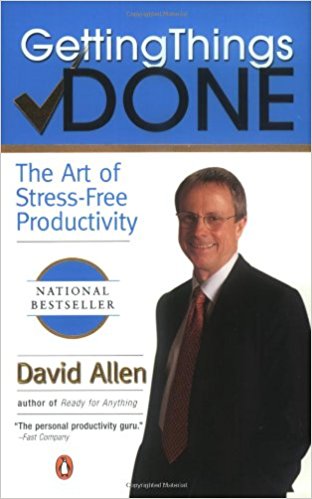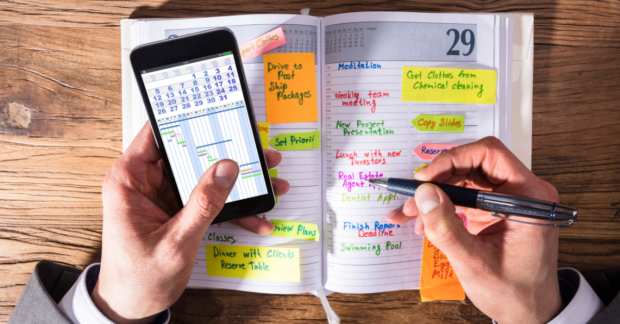Throughout history, the most productive people used wildly different techniques to manage their busy schedules depending on their personalities, preferences, circumstances, and energy.
Winston Churchill used to work well into the night and then make up for it during the day by napping.
There is no such thing as one schedule to guarantee maximum efficiency to fit everyone, but there are ways you can make your schedule manageable to become the most productive you can be.
Welcome to Snapreads! Today, we’re bringing you the simple solution to productivity and how to make your schedule more manageable.

Smarter Faster Better
by David Allen
⏱ 14 minutes reading time
🎧 Audio version available
The Time Blocking Method
Next up, we have the Time Blocking Method, a time-management method that involves dividing the day into “blocks” of time. And each block is solely dedicated to accomplishing a specific or group of tasks.
So after you’ve planned your day out in advance, assign specific hours to accomplish distinct tasks. Determine what you want to achieve and calculate how much it will take to accomplish it.
Put the plan into action by inputting the information in your calendar and start working. The method results in a dramatic difference in how you view your schedule. Having everything predetermined isn’t stifling.
To put things into perspective, look at the average to-do lists that contain a list of tasks that you’re free to complete in your own time– and put off until the next day until you become overwhelmed.
The Time Blocking Method forces you to finish the work and feel like, “Hey, this is manageable.” This structured type of schedule forces you to accomplish that laser focus that makes you finish tasks faster than you thought you could.
Don’t Multitask
Multitasking is the enemy of productivity. Seriously. Many people claim to have mastered the art of multitasking to the point of being extra productive, but that’s not true.
Productivity is decreased by over 40% when you try to pull off doing two or more things simultaneously. But what can you do to make your schedule more manageable if you can’t do several things at the same time?
Instead of finishing several different tasks simultaneously, you gather all the similar tasks and get them done in one chunk of time. This way, you’ll be ultra-focused on the task at hand and won’t lose precious time getting your head in that productivity zone again.
MIT – The Most Important Task Method
The Most Important Task Method is all about focusing on what takes priority. Instead of listing a two-page long to-do list and struggling to get it all done, try picking out the most vital tasks- no more than three — that you consider being irreplaceable essential.
Throughout the day, your focus should be on those tasks– so much so that you don’t pick up other tasks until the most important tasks are accomplished.
Most days, dozens of tasks seem to require our immediate attention, but two to three essential tasks will stand out. For example, those emails and phone notifications can take a backseat.
Work in Short, Intense Bursts
Do you ever experience those intense, super focus bursts of productivity and then crash for the next day? You know you have it in you to be productive, but there’s a formula that you haven’t discovered yet. Well, here is it, these bursts are actually called the Pomodoro technique.
Here’s how it goes: you work in these short, crazy productive, intense bursts, and then you go on a short break– and repeat. To start, you will need a timer and the determination to laser focus, knowing that there’s a reward waiting in a few minutes.
So have a task that needs to be accomplished? Set your time to alert you after 25 minutes. And until that timer dings! Your attention is strictly focused on the task alone. After the 25 minutes end, take a short, five minutes break.
And here’s your reward! With every four Pomodoro sessions, you can increase that break from five minutes to 15 and up to 30 minutes. This technique allows you to accomplish a big chunk of– if not your entire– schedule as time goes by without becoming mentally fatigued.
Don’t Answer Emails First Thing
You’ve just arrived at work, booted up your computer, and feel that familiar dread as you look at the dozens of emails waiting for you. Feeling like you want to give up first thing in the morning is not a way to become productive throughout the day. So what’s the solution?
The number one– and two, and three– task on your schedule shouldn’t be these mentally-draining tasks like answering emails. Start with doing whatever task demands the most creativity.
Even before you go to work, start out the day right by getting in a good, healthy, hearty breakfast, meditating, working out– whatever your thing is, and ensure that you’ve got the necessary energy to tackle the day’s essential tasks first.
And hey, if you’re not a morning person or you find that your peak productive and creative time isn’t the morning, then figure out what is best for you and schedule around it.
Cut Down Your To-do List
Steve Jobs insisted that Apple produces just four computers despite their capability to assemble more. This decision saved the company. This next piece of advice comes straight from the mouth of one of the most productive people in history.
Here’s how Steve Jobs made his to-do list. It is apparent a person with such responsibility, such as the Apple founder himself, had a thousand things to do each day, but every year, he would take his “top 100” people from the company on a retreat.
On the last day of the retreat, he would get a whiteboard and ask them, “What are the ten things we should be doing next?” Of course, the 100 people would scramble to get their suggestions on the list.
Steve Jobs would write them down and then cross off any tasks that he deemed not necessary enough. They would eventually develop a list of the ten most important tasks that need to be accomplished.
And then Jobs would take off the bottom seven and say that they’re only going to do three of those tasks.
This method of prioritizing essential tasks and either delegating– which we’re going to get to in a second– and rescheduling the remaining, secondary tasks to another day– ensure that you have realistic goals that you can accomplish to make significant progress on the day.
Delegate
For managers and business people, delegating is a somewhat controversial topic. Some enjoy it, and some hate it, but you’ll be surprised at how faster and how much easier your job is if you delegate some of the things that aren’t as necessary to other people.
The most common argument against delegation is that delegating work gives the person more work to do because they have to supervise or clean up someone else’s work on top of what they’re doing.
But supervision doesn’t require that much focus, and if you keep an eye on someone while they’re doing that task, you’re not delegating– you’re micromanaging.
Related: How to Be a Super Performer and Outwork Your Competition
Plan Phone Calls
As much as we would all love to be Harvey Spectre or Don Draper calling out to our secretaries to hold our calls while we’re working on something else, the chances are most of us don’t have personal secretaries at our disposal.
And guess what? There’s nothing like a phone call to interrupt your work, destroy that productive streak, and delay the rest of the things that you need to get done throughout the day. Phone calls deserve their spot on the schedule.
Turn off your phone when you’re working on something that requires your full attention, then when it’s time– make all your outgoing calls so that you spend less time trying to reach people and spend more time making productive conversations.
90 Minute Focus Sessions
This is what we call a pro-productive person move. It sounds like an oxymoron to say that you’re most productive when you’re exhausted, but many people actually feel the most energized when they’re tired.
See, the human body has these cycles called “ultradian rhythms,” and during each of these cycles, we reach a peak when we feel the most energy when we’re exhausted. For now, we’re going to wield those cycles to our full advantage by using 90-minute focus sessions.
What you do is that you work for 90 whole minutes. Unlike the Pomodoro method, which is only 25 minutes long, the 90-minute focus session technique is intense but very rewarding. After those 90 minutes, rest for 20 to 30 minutes before going at it again.
When you work in these 90-minute intense bursts, you allow yourself to correlate your to-do list when you’re most productive with high energy levels, which gives you a significant major productivity boost.
Instead of working against your body and mind, you’re working along with it. Now take a look at that schedule. Does it appear a lot less intimidating now?
What Is Snapreads?

With the Snapreads app, you get the key insights from the best nonfiction books in minutes, not hours or days. Our experts transform these books into quick, memorable, easy-to-understand insights you can read when you have the time or listen to them on the go.


